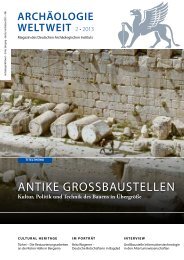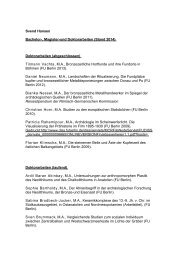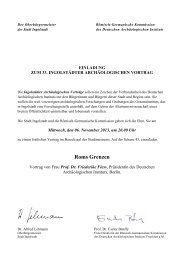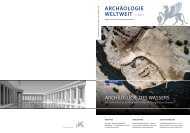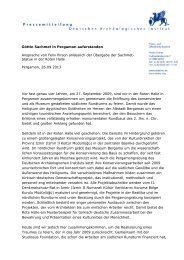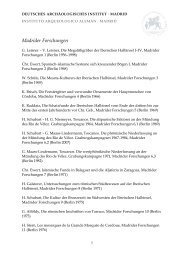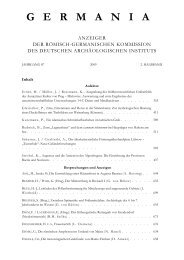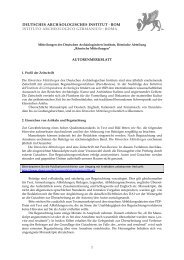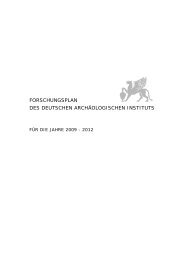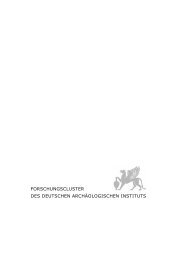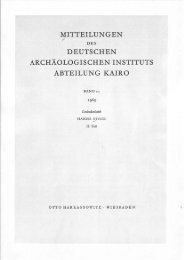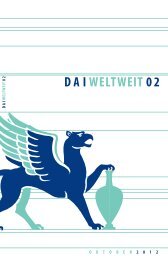Untitled - Deutsches Archäologisches Institut
Untitled - Deutsches Archäologisches Institut
Untitled - Deutsches Archäologisches Institut
You also want an ePaper? Increase the reach of your titles
YUMPU automatically turns print PDFs into web optimized ePapers that Google loves.
8<br />
The latest from Göbekli Tepe<br />
In the 17 th excavation campaign, archaeological research concentrated on the north-west hill,<br />
where we have been working since 2009. Six T-shaped pillars were found in situ, belonging<br />
to two new circular enclosures. Particularly noteworthy is the combination of pictorial motifs<br />
entirely covering one of the pillars (Fig. below): an apparent horror vacui not observed before<br />
in this intensity.<br />
Archaeometric analysis once again focused on the archaeofauna, which is being analysed<br />
by the <strong>Institut</strong>e of Palaeoanatomy and Domestication Research at the University of Munich.<br />
The fauna is exclusively wild, with gazelles, aurochs and wild donkeys as important attested<br />
species. Among the avifauna, which is equally well represented, there is a notably high<br />
proportion of corvids, cranes, birds of prey and songbirds. Promising first results have been<br />
provided by aDNA and isotope analyses. The anthropological investigations have yielded<br />
clear evidence of artificial manipulation, suggesting intensive post-mortal treatment of<br />
human skeletal material. Investigations into the provenance of the obsidian raw material have<br />
established an unexpectedly wide spectrum of sources of raw materials which also includes<br />
central Anatolia.<br />
New radiocarbon dates permit<br />
the dating of Enclosure D<br />
in particular to be fixed in the<br />
period around 9500 BCcal<br />
(early PPNA). A peculiar feature<br />
consists in the bones of a<br />
fox tail discovered in front of<br />
the western central pillar of<br />
the enclosure. Together with<br />
the pairs of holes which are<br />
repeatedly to be observed<br />
on the edges of the pillars,<br />
this feature indicates that the<br />
pillar was decorated with a<br />
fox tail or fox fur; and that,<br />
as part of cult activities, the<br />
pillars were decorated over<br />
and above their abundant<br />
repertoire of carved images,<br />
as is known from later<br />
Mesopotamian idols.<br />
Klaus Schmidt



